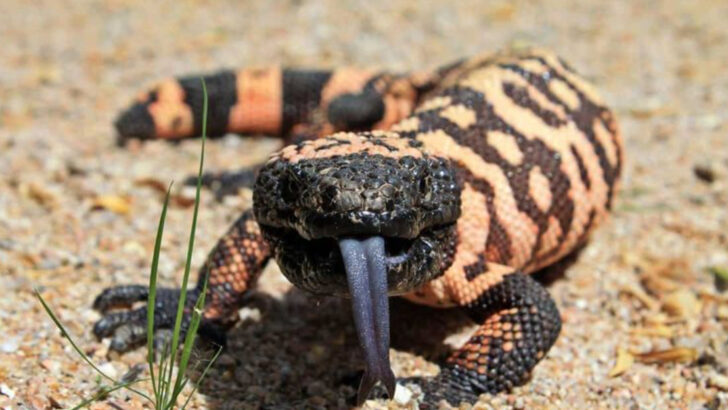Getting bitten by a Gila monster isn’t just painful—it’s like being caught in a reptilian vice with venom on the side.
This desert dweller doesn’t just nibble and run. When it bites, it clamps down hard, chews venom into the wound, and holds on like it’s settling in for a meal. It’s slow, intense, and unforgettable.
But before panic sets in, here’s the truth: Gila monster bites are rarely fatal—but they are no joke. Swelling, burning, nausea… the symptoms can hit fast and hit hard.
Whether you’re a hiker, a herpetologist, or just someone curious about nature’s more dramatic moments, these 12 facts will arm you with everything you need to know about one of North America’s most infamous reptiles.
Venomous Yet Rarely Fatal
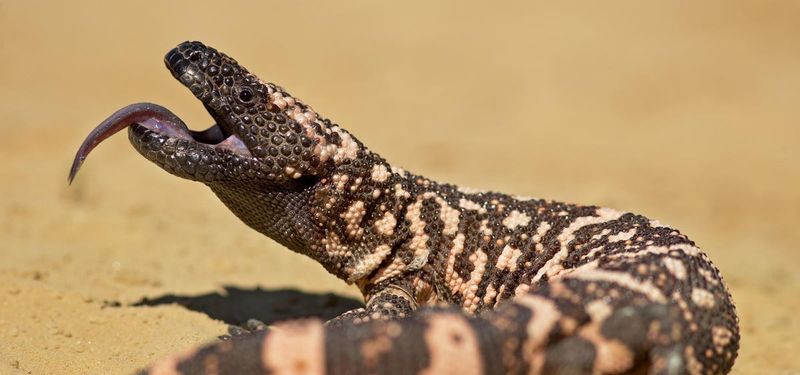
The Gila monster, though venomous, rarely causes fatal harm to humans. Their venom is a complex mixture of proteins intended for defense, not hunting. In fact, fatalities from Gila monster bites are virtually unheard of. A bite might lead to significant discomfort and pain, but with proper medical care, recovery is usually swift.
Interestingly, the venom has been studied for its potential medical benefits, adding an ironic twist to its otherwise fearsome reputation. Although the thought of encountering a venomous lizard sounds alarming, understanding its nature helps ease the perceived danger.
Remember, the threat is often exaggerated.
A Slow and Deliberate Bite
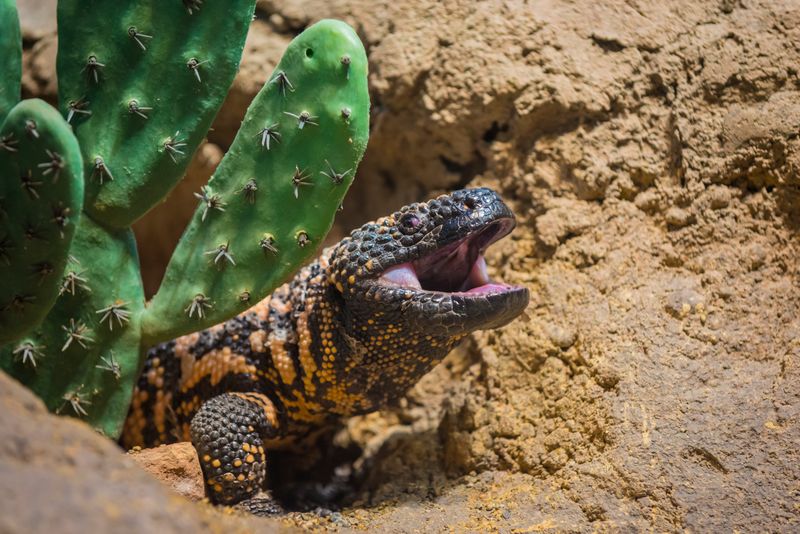
Unlike most predators, the Gila monster’s bite is slow and deliberate. It doesn’t strike swiftly like a snake but clamps down with steady force. This unique biting method ensures that venom is effectively delivered.
Once latched on, the Gila monster may chew to further inject venom. This can make the removal process challenging and quite painful.
Interestingly, their methodical approach is a testament to their evolutionary adaptations, designed more for defense than aggression. This deliberate nature is part of why many find Gila monsters both fascinating and intimidating.
Legal Protection Status

Gila monsters are protected by law in the United States, emphasizing their ecological importance. This legal status helps prevent excessive hunting and habitat destruction. Interfering with or harming them can result in significant fines or penalties.
These laws reflect the growing recognition of the role Gila monsters play in their natural ecosystem. Conservation efforts have been crucial in maintaining their population levels and ensuring that future generations can appreciate these unique creatures.
This protection highlights the complex relationship between humans and wildlife, where understanding fosters coexistence.
Painful but Manageable Symptoms
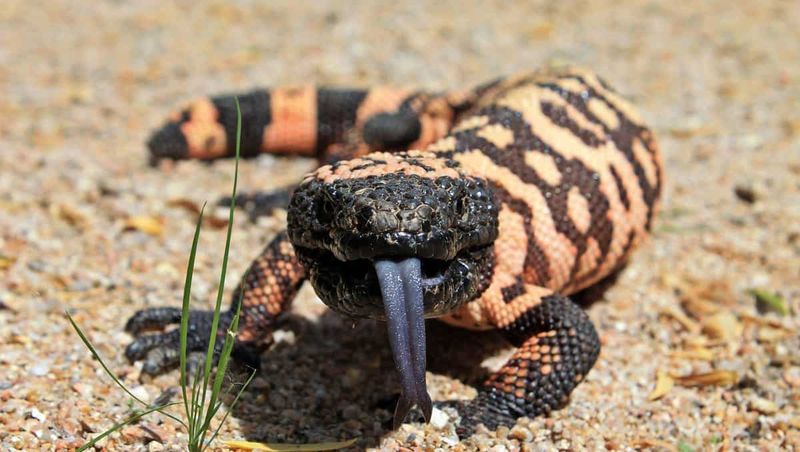
Being bitten by a Gila monster can result in severe pain, swelling, and localized bleeding. The symptoms, while distressing, are generally manageable with appropriate first aid and medical care.
Pain can persist for several hours, but complications are rare if treated promptly. Most health facilities are equipped to handle such bites efficiently, thanks to awareness and training.
In an odd twist, the Gila monster’s painful bite underscores the need for preventative measures, reminding us of the importance of respecting wildlife. Despite the discomfort, the experience is survivable and treatable.
A Bite Steeped in Myth
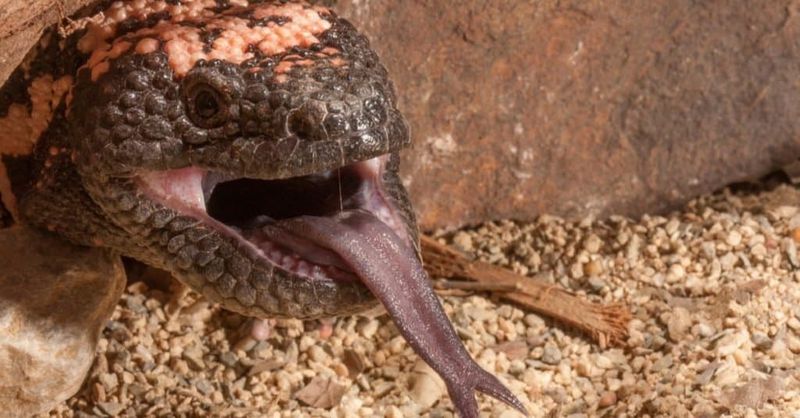
Stories and myths about the Gila monster have circulated for centuries, often exaggerating their danger. Some tales portray these lizards as deadly creatures that can kill with a single bite.
In reality, the fearsome reputation is largely unfounded. The myths likely stem from a lack of understanding and a healthy respect for their venomous capabilities.
Today, education and research have dispelled many of these myths, helping to replace fear with informed curiosity. The evolution from myth to fact is a fascinating journey, illustrating how knowledge can transform perceptions.
Desert Dwellers

Gila monsters are native to the desert regions of the southwestern United States and northern Mexico. They thrive in arid environments, where they hunt and seek shelter among rocks and cacti.
Their ability to survive in such harsh conditions is a testament to their resilience and adaptability. This habitat preference also plays a role in their interactions with humans, who may encounter them during desert excursions.
Understanding their natural habitat is key to appreciating the Gila monster’s lifestyle and the challenges they face in the wild. Their presence is a reminder of the desert’s diverse ecosystem.
Unique Feeding Habits
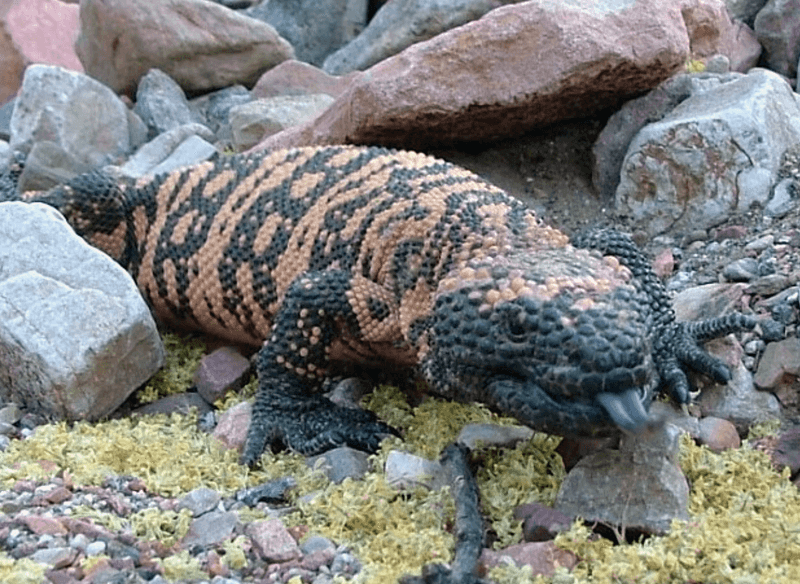
The Gila monster has a unique diet that includes small mammals, birds, and eggs. They have a particular fondness for eggs, which they consume by crushing the shells with their powerful jaws.
This diet reflects their opportunistic feeding habits, allowing them to thrive in environments where food sources can be scarce. Their ability to store fat in their tails also aids in survival, providing energy during lean times.
These feeding strategies highlight the Gila monster’s adaptability and resourcefulness, showcasing an intriguing aspect of their natural behavior.
Rarely Aggressive Towards Humans
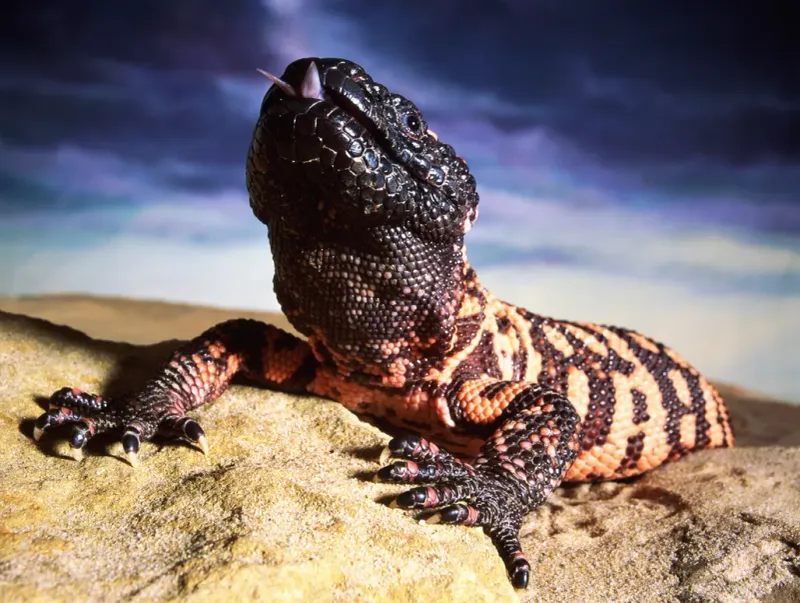
Gila monsters are typically shy and reclusive, avoiding human interaction when possible. They are rarely aggressive and will only bite if provoked or threatened. This behavior stems from their defensive nature, not inherent aggression.
By maintaining a safe distance and respecting their space, humans can coexist peacefully with these unique creatures. Education about their behavior further reduces the likelihood of negative encounters.
Understanding their temperament fosters a more harmonious relationship between humans and Gila monsters, emphasizing respect and coexistence in shared environments.
A Symbol of the Southwest
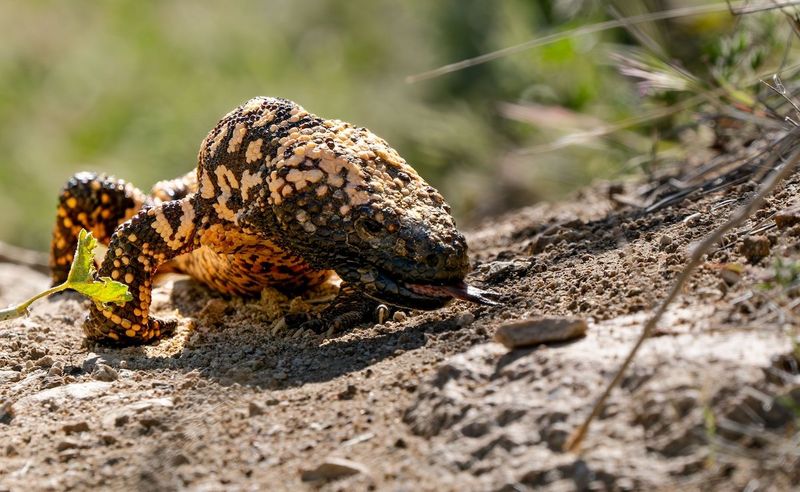
The Gila monster is more than just a lizard; it’s a cultural symbol of the American Southwest. Its image has been used in art, folklore, and even local business logos.
This cultural significance highlights a deep connection between the Gila monster and the regions it inhabits. Its iconic status adds to its intrigue and mystique, making it a subject of fascination beyond just biological interest.
The Gila monster’s cultural impact underscores the importance of preserving such unique species, enriching both the natural and cultural landscapes.
Potential Medical Applications
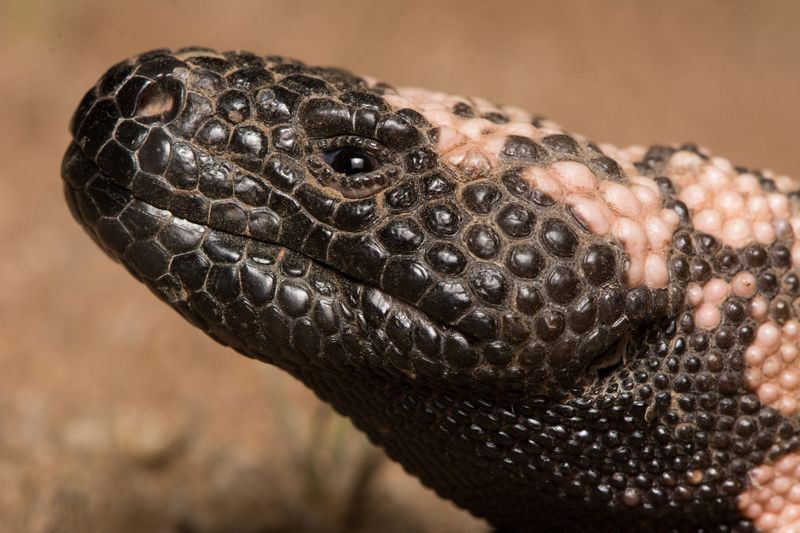
Gila monster venom has sparked scientific interest due to its potential medical applications. Researchers have discovered compounds in the venom that may aid in treating conditions such as diabetes.
This medical potential is a remarkable example of how nature’s complexities can lead to groundbreaking discoveries. The venom’s beneficial properties have shifted perceptions, highlighting the Gila monster’s significance in medical research.
Exploring these applications fosters a deeper appreciation for the Gila monster, transforming it from a feared creature to a subject of medical fascination.
Distinctive Appearance
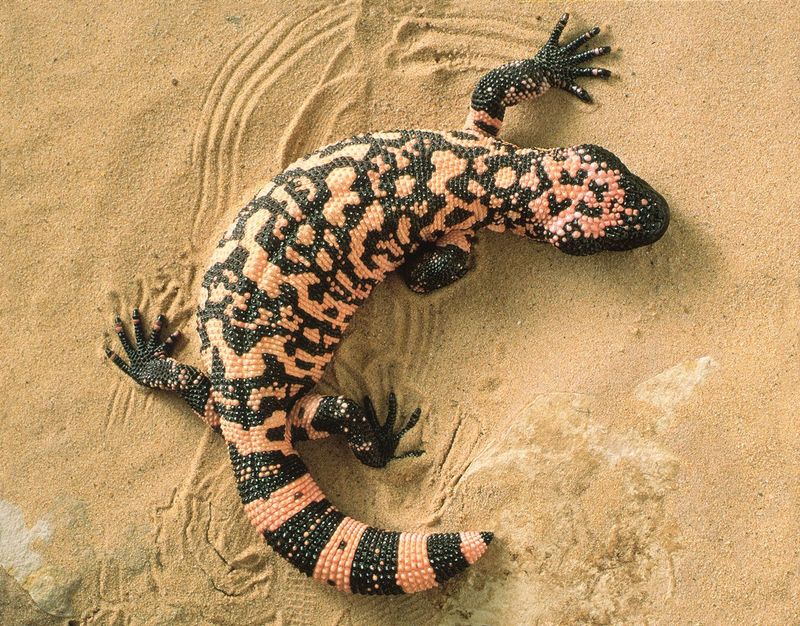
The Gila monster boasts a striking appearance, with a distinctly patterned skin that features black and orange or yellow bands. This coloration serves as a warning to potential predators, signaling its venomous nature.
Their textured, beaded skin adds to their distinctiveness, making them easily recognizable even from a distance. These visual characteristics are not just for show; they play a crucial role in survival and deterrence.
The Gila monster’s appearance is a testament to its evolutionary adaptations, blending functionality with beauty in the animal kingdom.
Conservation Challenges
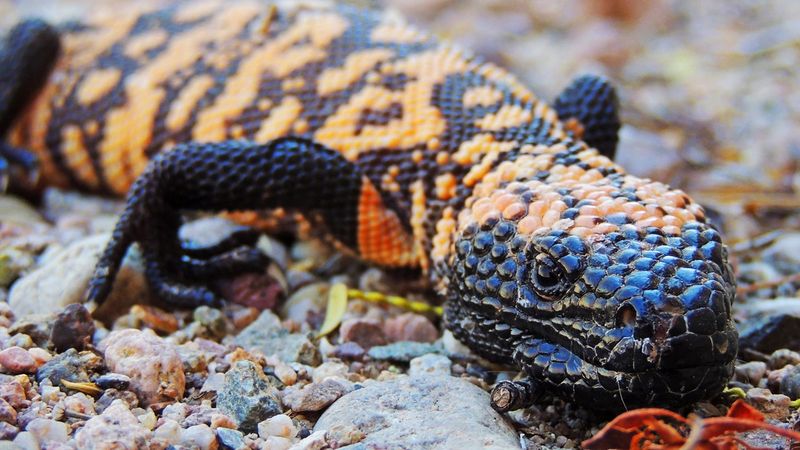
Gila monsters face numerous conservation challenges, primarily due to habitat loss and human encroachment. As urban development expands, their natural habitats shrink, leading to increased encounters with humans.
Conservation efforts are crucial to ensuring their survival, involving habitat protection and public education. By raising awareness about their ecological role, we can promote coexistence and reduce negative impacts.
These challenges remind us of the importance of preserving biodiversity and the delicate balance between urban growth and wildlife conservation.

